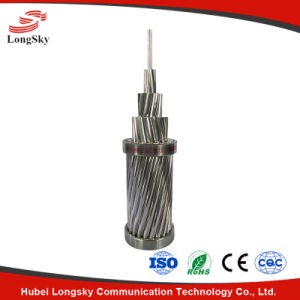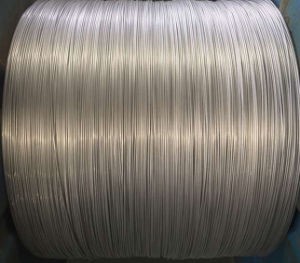Welcome!
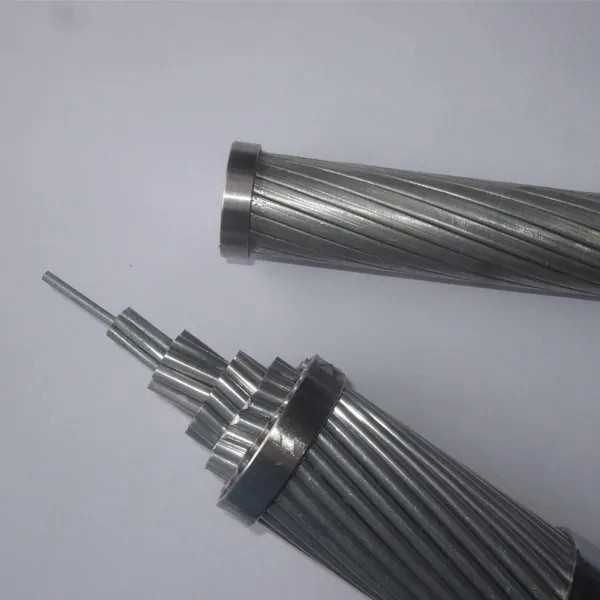




High-Voltage Aluminum Stranded Wire: Powering Long-Distance Transmission
Basic Info
| Application | Overhead | Certification | ISO9001, CE, CCC | Conductor Material | Aluminum |
|---|---|---|---|---|---|
| HS Code | 4107961636 | Insulation Material | Bare | Material Shape | Round Wire |
| Origin | Zhengzhou Henan | Production Capacity | 50000km/Month | Range of Application | Overhead |
| Sheath Material | Bare | Specification | 1.1*1.1 | Transport Package | Drum |
Product Description
High-voltage aluminum stranded wire, most commonly implemented as Aluminum Conductor Steel Reinforced (ACSR), is the workhorse conductor for overhead electrical power transmission lines operating at high voltages (typically 66kV and above). It is specifically engineered to efficiently carry large amounts of electrical current over significant distances with minimal losses.

The core structure defines ACSR:
Central Core: Multiple strands of high-strength galvanized or aluminized steel wire. This core provides exceptional tensile strength to withstand mechanical stresses like wind, ice loading, and the conductor's own weight over long spans.
Outer Layers: Concentric layers of high-purity electrical grade aluminum (EC grade or 1350-H19 alloy) strands helically wound around the steel core. These aluminum strands carry the bulk of the electrical current.
ACSR is manufactured in various standard sizes and configurations (e.g., "Drake," "Hawk," "Rail"), denoted by the total aluminum cross-sectional area and the steel core area, to meet specific electrical capacity (ampacity) and mechanical strength requirements for different transmission line designs.

Basic Uses
The primary application of high-voltage aluminum stranded wire (ACSR) is in the construction of overhead electrical transmission and sub-transmission lines. These are the high-capacity "backbone" networks that transport electricity generated at power plants (hydro, thermal, nuclear, wind farms, solar farms) across vast distances to distribution substations near population and industrial centers. They form the critical infrastructure of national and regional power grids. ACSR is also used in large substation buswork.

Product Advantages
ACSR dominates high-voltage transmission due to its compelling combination of advantages:
Excellent Strength-to-Weight Ratio: The steel core provides the necessary high tensile strength, while aluminum keeps the overall conductor weight significantly lower than an equivalent copper conductor of the same resistance. This allows for longer spans between towers, reducing the number of expensive support structures needed.
Good Electrical Conductivity: Aluminum offers sufficient conductivity (about 61% IACS - International Annealed Copper Standard) for efficient power transmission. Its conductivity-to-weight ratio is superior to copper.
Cost-Effectiveness: Aluminum is considerably less expensive than copper, making ACSR the most economical choice for high-capacity, long-distance lines, especially considering the large volumes of conductor material required.
Corrosion Resistance: Aluminum naturally forms a protective oxide layer. When combined with galvanized or aluminized steel core protection, ACSR offers good long-term corrosion resistance in most atmospheric environments.
Proven Reliability & Longevity: ACSR has decades of proven performance history worldwide. When properly selected, installed, and maintained, it offers a very long service life (often exceeding 40 years).
Adequate Thermal Performance: Handles the thermal expansion and contraction cycles associated with load variations and ambient temperature changes effectively.
Availability & Standardization: Widely available globally in numerous standardized sizes and types.
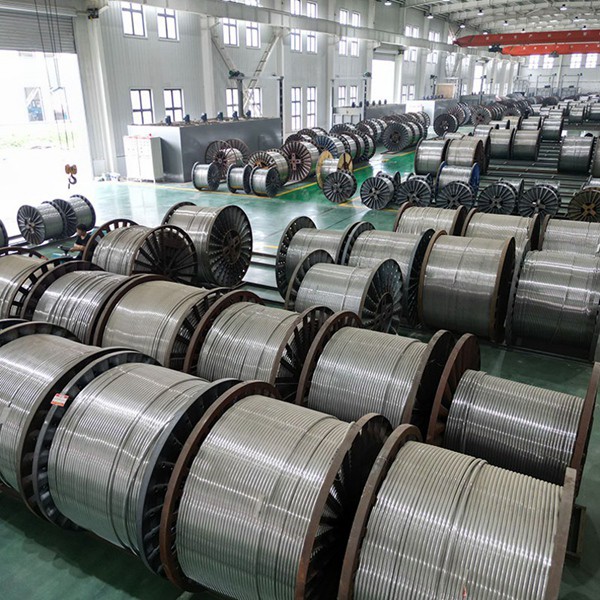

Q1: Why use aluminum instead of copper for high-voltage lines? Isn't copper a better conductor?
A: While copper has higher conductivity per unit volume, aluminum's key advantages are its lower cost and significantly lower weight. For the same electrical resistance (and thus similar power loss), an aluminum conductor is lighter than a copper one. This translates to fewer, less massive, and less expensive support structures (towers/poles) needed over long distances. The cost savings on material and infrastructure overwhelmingly favor aluminum for high-voltage transmission.
Q2: What is the purpose of the steel core? Why not use pure aluminum?
A: Pure aluminum strands lack sufficient tensile strength for the long spans and heavy mechanical loads (wind, ice) encountered in high-voltage transmission lines. The steel core provides the essential mechanical strength to support the conductor's weight and withstand environmental forces without excessive sag or breaking. The aluminum strands are optimized for electrical conductivity, while the steel core handles the mechanical load.
Q3: Is corrosion a major problem for ACSR?
A: ACSR is designed for good corrosion resistance. The aluminum outer layers naturally resist atmospheric corrosion. The steel core is protected by galvanizing (zinc coating) or aluminizing (aluminum coating). However, corrosion can become an issue in severe environments (coastal salt spray, heavy industrial pollution, areas with acid rain) or if the conductor is damaged. Galvanic corrosion can also occur at the aluminum-steel interface if moisture penetrates, though proper conductor design and coatings mitigate this. Regular inspections are important.
Q4: What causes "sag" in transmission lines, and how does ACSR handle it?
A: Sag is the natural downward curve of the conductor between support points. It increases due to:
Conductor Weight: Inherent sag under its own weight.
Temperature: Conductors expand and sag more as temperature rises (both ambient heat and heat from electrical current - I²R losses).
Ice Loading: Accumulated ice adds significant weight, increasing sag dramatically.
ACSR handles sag through the strength of its steel core, which limits elongation under tension. Transmission lines are carefully designed considering maximum operating temperature, worst-case weather (ice/wind), and required ground clearances to ensure safe sag levels throughout the conductor's lifespan. Higher temperatures or ice loads require shorter spans or higher tension designs.
Q5: Are there alternatives to ACSR for high-voltage lines?
A: Yes, alternatives exist, often chosen for specific advantages or challenges:
All-Aluminum Alloy Conductors (AAAC): Use stronger aluminum alloys (like 6201) throughout, eliminating the steel core. Offers better corrosion resistance and slightly lower weight than equivalent ACSR, but usually at a higher cost and may have slightly higher electrical resistance.
Aluminum Conductor Composite Core (ACCC): Replaces the steel core with a lightweight, high-strength composite core (e.g., carbon fiber). Allows for a larger aluminum cross-section (reducing resistance and losses) or higher operating temperatures (increasing capacity) without increasing sag. Higher initial cost.
Aluminum Conductor Composite Reinforced (ACCR): Similar to ACCC but uses an aluminum matrix composite core. Also enables higher temperature operation and increased capacity.
Expanded Diameter Conductors: ACSR variants with trapezoidal wires or other designs to increase diameter without adding much weight/metal, improving corona performance (reducing radio noise and power loss) at extra-high voltages (EHV).
ACSR remains the most common and cost-effective choice for the vast majority of high-voltage transmission applications globally, balancing performance, reliability, and economics.
Recommended Products
Recently Viewed
 High-Voltage Aluminum Stranded Wire: Powering Long-Distance Transmission
High-Voltage Aluminum Stranded Wire: Powering Long-Distance Transmission Aluminum Electrical Cables: Efficient Power Distribution Solutions
Aluminum Electrical Cables: Efficient Power Distribution Solutions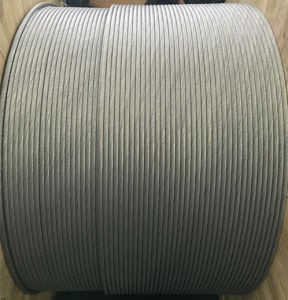 Exposed high-voltage wires and high-voltage power supply cables
Exposed high-voltage wires and high-voltage power supply cables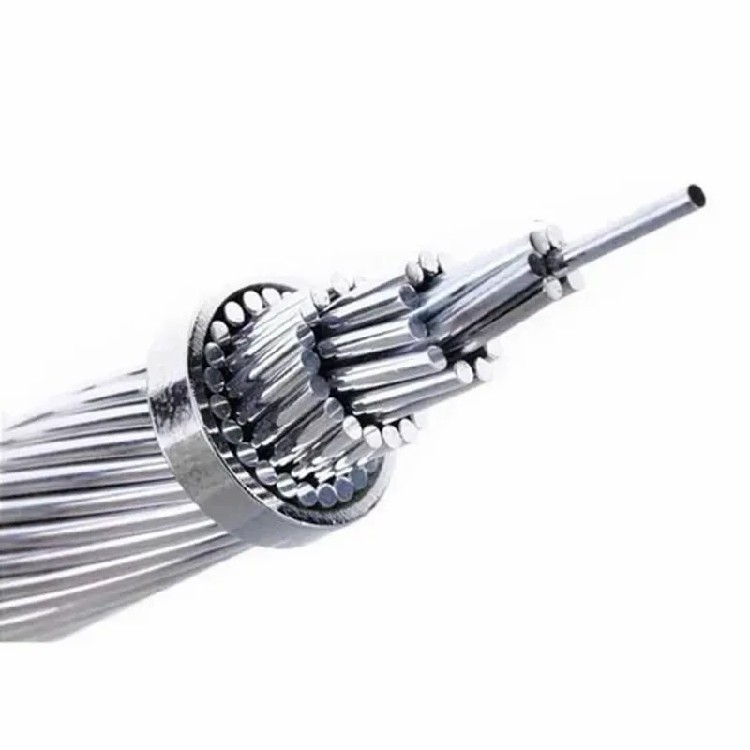 Practical high-voltage overhead aluminum cables are for sale
Practical high-voltage overhead aluminum cables are for sale ACSR: The Backbone of Modern Power Transmission
ACSR: The Backbone of Modern Power Transmission
Contact Us
Hubei Longsky Communication Technology Co., Ltd.


